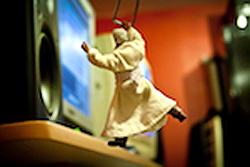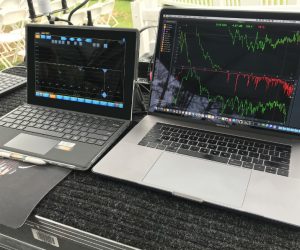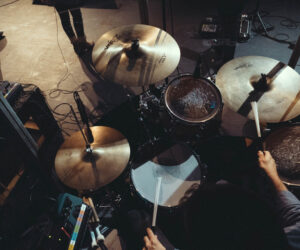Most of the time there is an obvious choice. Need more mid-range? Grab an EQ and boost the midrange. Need more control of the source? Volume automation or compression. Easy.
But sometimes we face strange challenges — like how to get more bass in the kick without running out of headroom. Or how to make something sound brighter that doesn’t have much harmonic content above 7 kHz except hiss. Well, where there’s a will there’s a way. Sometimes the way is just a little less predictable.
So with that said, here are seven counterintuitive mixing techniques pros regularly use to solve unconventional problems.
1. Using a low-pass filter for brightness
What? How can using a low-pass filter make something brighter? Well, let’s say you have a distorted guitar. It’s power goes up to about 5-6 kHz, but after that it’s just noise. A treble boost will bring out that noise, clog up your mix, and make the guitar harsh.
Instead, use a low-pass filter with a very steep slope. This does two things: first, it cuts out noise and distortion. Second, it actually accentuates the tone at the corner frequency — so while you might be attenuating everything above say 6 kHz (for example), you’re actually boosting the 6 kHz region. This happens because the EQ generates resonance right at the corner of the pass band — and it’s actually pretty clean and clear!
2. Adding mid-range for bigger bass
When we want to hear more bass in a bass guitar, kick drum, or other low-end element, the obvious solution is to boost the low end.
However, sometimes what we really want to do is just draw more attention to that bass element. We can do this by adding mid-range: pulling up the thud of a kick or the gnarly overtones of a bass. This pulls our ear to that element, telling us there’s more of it there — even if it’s actually just more mid-range.
This can be extremely valuable when you don’t have much headroom, or there’s something else competing for attention in the low end.
3. Using compression to increase dynamics
But wait, doesn’t a compressor restrict dynamic range? Not necessarily It attenuates a signal that exceeds an amplitude threshold. In most cases that will restrict the dynamic range.
However, if the attack is long enough, and the threshold is low enough, a compressor can actually exaggerate the attack. This happens because the compressor allows the front of the signal to pass mostly unaltered, while still pulling down the sustain of the signal and making the attack more prominent relative to the sustain.
This can be very useful when trying to bring an already over-compressed signal to life (over compressed … compress it some more!) — or for injecting some serious snap into a dull drum sound.



















